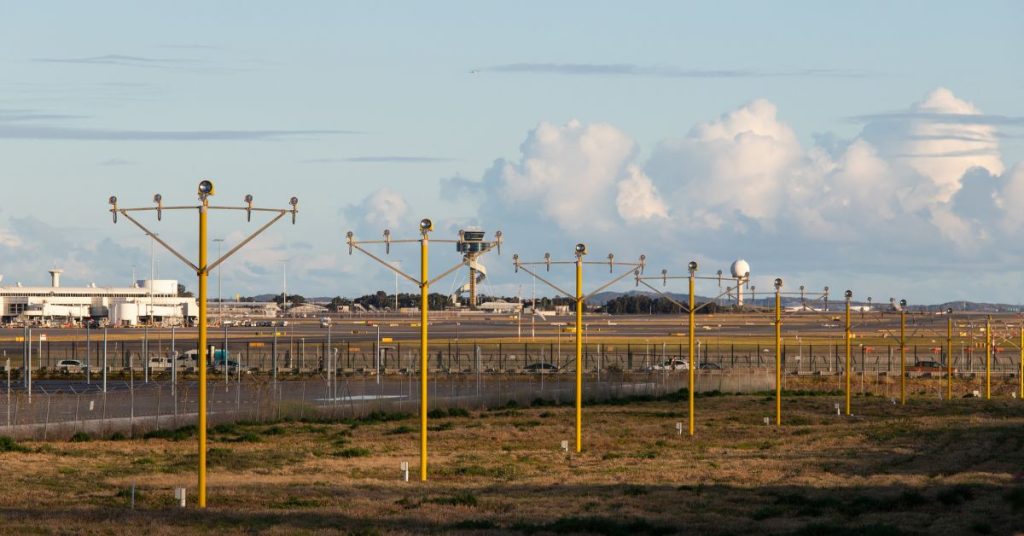Aviation authorities set particular, non-negotiable standards regarding the minimum level of visibility needed to guarantee secure landings. The extent of visibility necessary for a plane to complete its landing varies, relying on multiple elements such as the aircraft’s type, the runways and infrastructure available at the airport, and the crew training and experience.
What Are Visual Flight Rules?
Visual Flight Rules, or VFR, are like driving a car where you rely on what you can see. Pilots, in this case, use their eyes to guide the plane to landing. To do this securely, there are rules about how far in distance you need to see into the distance. It’s like saying, “You must see at least 3 miles ahead and stay away from clouds.” That is around 4.83 kilometers. Besides being able to see this specified length, visual flight rules also dictate that pilots should steer clear of clouds. So, they must keep a distance from the overcast to ensure they can see the ground and its surroundings. They need to particularly stay at least 500 feet below, 1,000 feet above, and 2,000 feet away lateral from clouds. This helps keep their visual range clear. However, pilots might need to see a longer distance to guarantee safety in some places near busy airports or where air traffic controllers peer close.
So, visual flight rules are good weather conditions where pilots can depend on things they observe to steer and land the aircraft. These things include recognizable marks on the ground, like roads, rivers, and tall buildings, which help them figure out where they are and where they’re going. Pilots also keep an eye on special instruments in the cockpit. These instruments give them important details like how fast they’re going, how high they are, and which direction they’re heading. Even though they’re mostly looking out the window, these instruments help them stay in control. So, it’s like using what they see outside and what they read on their cockpit instruments to stay safe in the sky.
What Are Instrument Flight Rules?
What happens if the weather is not that merciful? Instrument Flight Rules (IFR) come into play when it’s cloudy and hard to see outside. Pilots switch gears and use their fancy instruments in the cockpit to find their way, with assistance from air traffic controllers. The rules are stricter here – like a precise dance with the clouds. The visibility needed for safe landings isn’t a one-size-fits-all deal; it depends on the specific approach they’re using and the equipment at the airport. So, in this cloudy tango, different dance moves may require different levels of seeing and staying clear of clouds. Instrument flight rules cover the guidelines and methods that permit aircraft to function when they can’t rely on seeing things outside due to poor visibility, and ILS is a tool within the instrument flight rules system, ensuring safe and accurate landings.

What Is an Instrument Landing System?
If you’re landing an aircraft, and outside, it’s so misty or cloudy that you can’t see the runway or the ground. That’s when the magic of the Instrument Landing System (ILS) comes into play. It’s like a helpful guide from the ground that uses radio signals to tell the pilot exactly where to go. It advises the pilot to stay on a particular invisible path and descend. Following these signals and using cockpit instruments, the pilot follows an invisible road in the sky. It’s like having a secret map that works even when you can’t see anything outside. So, the instrument landing system is like the co-pilot who battles gloomy weather for a safe landing.
Can Planes Land in Low Visibility?
Yes! With an instrument landing system, planes can manage that easily. There are a few categories that determine the minimum rules for landing under ILS.
CAT I
Category I ILS approach is a precise dance with the sky. The pilot must have a clear view of at least 1,800 feet (about the length of six football fields) and reach a crucial decision altitude (DA) 200 feet above the runway’s starting point. It is like the “make or break” moment during the dance routine. At the decision altitude, the pilot must decide whether to gracefully descend for landing for the right cues or change course and try again if things are still too cloudy for comfort. It’s like dancing to the rhythm of the skies, knowing when to land and when to step back.
CAT II
Onto Category II – the sunglasses landing system! It helps pilots see better when things are murky up there in the clouds. In this category, you need to have your aviation sunglasses on – the ones with a bit of extra flair. For the landing to happen, pilots need to be able to see at least 1,200 feet ahead and be at an altitude of 100 feet (about as tall as a T-Rex, but not as scary) above the runway. So, when the sky gets a little hazy, just remember that pilots have their magic sunglasses on to ensurethey can still find the runway and land safely.
CAT III
To land in this category, you’d better have your trusty radar-equipped raincoat because visibility is as elusive as a ghost in the mist. You will spot the runway once you’re nearly kissing it. Here, the decision height is the specific altitude (50 feet or lower) above the runway at which the pilot must make the critical choice to land. Pilots operating in Category III conditions are the ultimate magicians of the skies. They’re relying on their aviation training to pull off a grand disappearing act into the clouds – And then reappear safely on the runway for some spellbinding aviation. So, you can land without seeing the runway too!
Ready to meet the crew providing your trip support? Reach out to Icarus Jet for assistance with flight visibility concerns and a comprehensive package that elevates the overall experience for both your crew and passengers.




